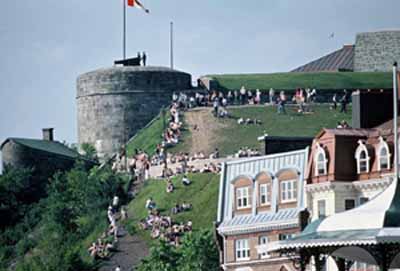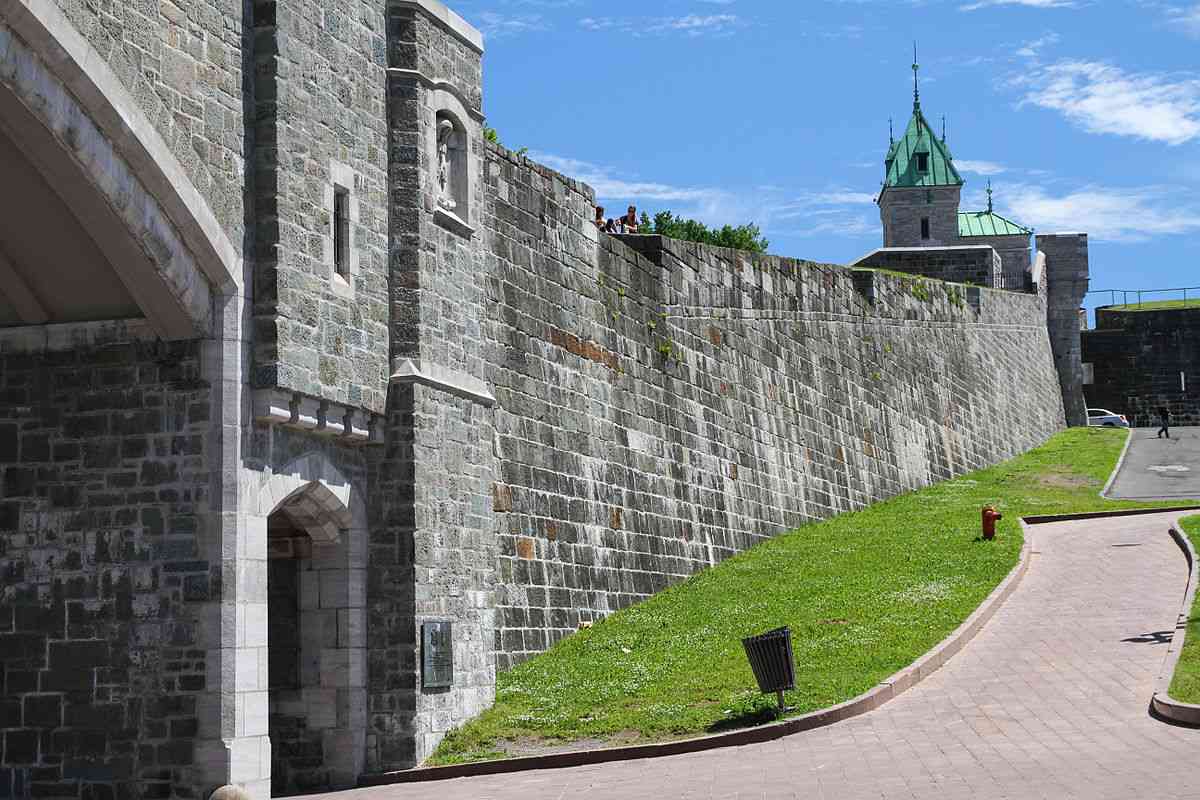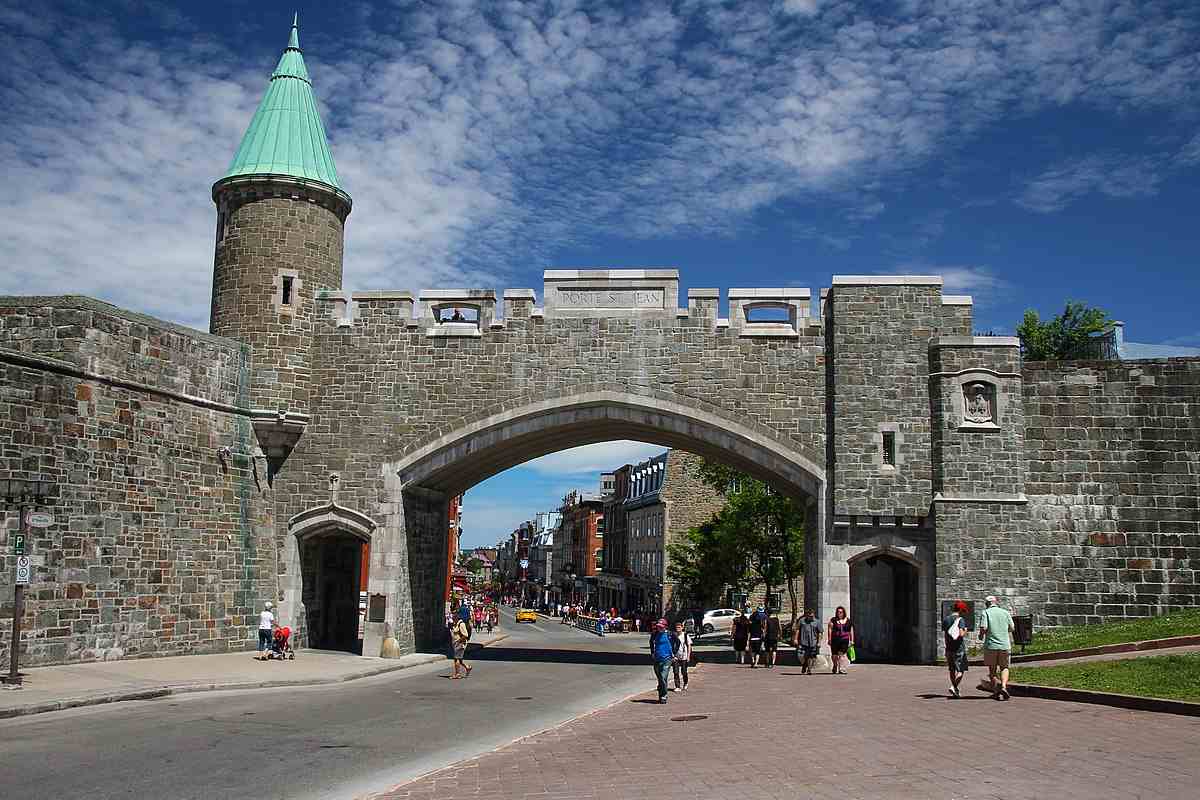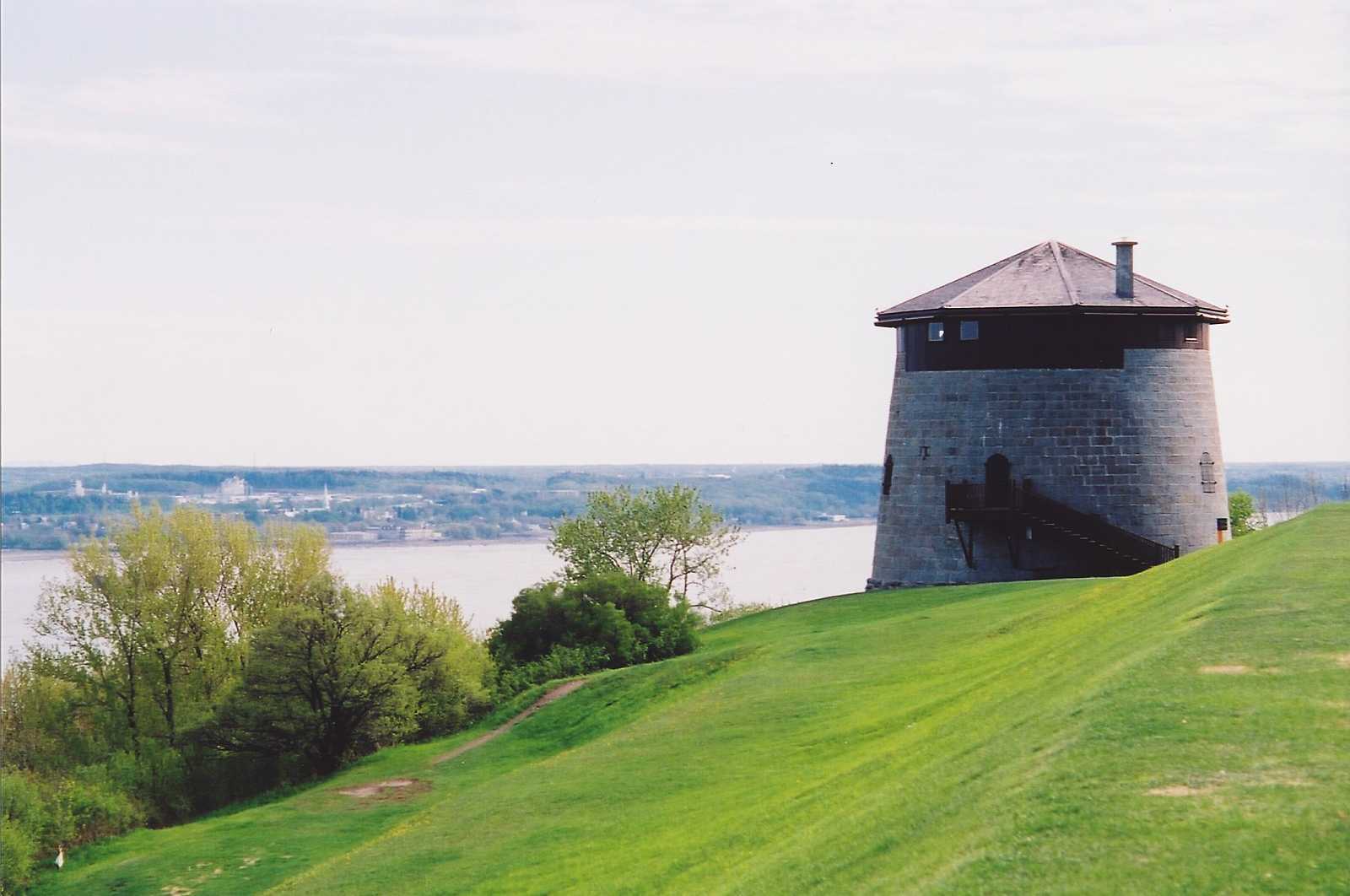Fortifications of Québec National Historic Site

© Parks Canada / P. St. Jacques / 1984
The Fortifications of Québec were designated as a national historic site in 1948.
Commemorative plaque: 97 Saint-Louis St., Québec, Quebec Footnote 1
The principal military stronghold in Canada during the colonial period, Québec City was protected by an elaborate defence system developed between 1608 and 1871. In addition to the ramparts surrounding the old city, the fortifications included other structures and spaces such as guardhouses, gates, powder magazines, stores, soldiers' and officers' barracks, parade grounds, and esplanades. Today, the main surviving components of the system are the 4.6-kilometre-long ramparts, the Citadel, three Martello towers, and Fort No. 1 at Lévis. Significant parts of the fortifications were saved from demolition as the result of several initiatives, in particular those of Governor General Lord Dufferin, a pioneering figure in Canada's heritage conservation movement in the late 19th century. Québec, the only fortified city in North America to have preserved its ramparts and numerous other defensive works, was recognized in 1985 as a UNESCO World Heritage Site.

© Pierre-Olivier Fortin, 2012

© Pierre-Olivier Fortin, 2012
Description of historic place
The Fortifications of Québec National Historic Site of Canada comprises a number of sites associated with the city of Québec’s historic defence systems. Its components are located in the city’s Upper Town and Lower Town, along the north shore of the St. Lawrence River to the Montmorency River in Beauport and on the south shore of Lévis. The site includes the actual fortifications and certain components, such as doors, guard posts, powder magazines, storehouses, barracks, and military facilities, all built between 1608 and 1871, which contribute to the city’s defence system. Official recognition refers to all of the associated physical, built, archaeological and landscape resources within the defined perimeter that are linked to the defence system, namely the mill’s redoubt and Mont-Carmel Park, the Esplanade powder magazine, the powder magazine located on the property of the Hôtel-Dieu Hospital, the Artillery barracks, the sections of the Artillery Park Heritage Site declared surplus by the Dominion Arsenal, the captain’s quarters in the Artillery Park Heritage Site, the ordnance storehouse in the Saint-Jean bastion, the Dauphine barracks, the Québec Martello Towers National Historic Site of Canada (NHSC), the Québec Garrison Club NHSC, the Québec Citadelle NHSC, and the Lévis Forts NHSC.
Heritage value
The Fortifications of Québec were designated a national historic site of Canada in 1957 because: they commemorate the defence system built between 1608 and 1871 in Quebec City, Canada’s main stronghold in the colonial era.
Located on a plateau overlooking the convergence of the St. Lawrence and the St. Charles Rivers, the fortifications for the city of Québec began with the city’s founding in 1608 by Samuel de Champlain. The original fortifications were makeshift works, built to meet the colony’s most pressing needs. Resembling a medieval castle, Champlain’s first fort, or Habitation, included a residence, merchandise and supply store, and a redoubt with elevated walls. Throughout the 17th century, this first habitation was replaced by a succession of rudimentary military works, including Fort St. Louis and Champlain’s second Habitation. In 1690, the fall of Port Royal in Acadia led the French to properly fortify the city with its first enceinte, consisting of 11 redoubts joined by palisades. Although the Upper Town’s steep cliffs acted as natural defences for two of its three sides, its vulnerable west side, which faced the open countryside of the Plains of Abraham, was made the top priority of Québec’s fortification program. The initial enceinte was followed by a succession of modifications and additions until 1745 when, after the fall of Louisbourg to the British triggered a state of panic among Québec’s inhabitants, a new enceinte laden with masonry was built, permanently enclosing the Upper Town’s western boundary.

© Parks Canada

© Josyan Pierson, 2006
Shortly after the conquest of Canada in 1759, the British victors were faced with new defense requirements. Though the British feared an attempt by the French to recapture Québec, as well as an uprising from the Francophone population, they could not raise the funds to strengthen the city’s defences right away. However, the Revolutionary War in America eventually spurred the construction of new fortifications. The British undertook a plan to strengthen and extend the 1745 enceinte around the entire city, build outworks in front of the enceinte to hamper the enemy’s approach, build defense works on the Plains of Abraham, and erect a masonry citadel on Cap Diamant. This last phase was completed between 1819 and 1832. Incorporating existing 18th-century defence systems in its design, the Citadel’s only real new fronts were those that faced the city, indicating that it was built, in part, to function as a British refuge in the event of a Francophone uprising. The completion of the Citadel marked the height of the city of Québec’s role as a fortress.
The construction of detached forts on the south shore in Lévis in 1865 was followed by the departure of the British garrison in 1871. Although several structures of the fortifications have deteriorated or were demolished since then, the primary defences of the city have been preserved due to the late 19th-century intervention of Governor General of Canada Lord Dufferin (1872-1878). Today, the city of Québec is the sole surviving example of a fortified city in North America.
Sources: Historic Sites and Monuments Board of Canada, Minutes, 1948, December 2000, June 2001; Statement of Commemorative Integrity, 2004.
The National Program of Historical Commemoration relies on the participation of Canadians in the identification of places, events and persons of national historic significance. Any member of the public can nominate a topic for consideration by the Historic Sites and Monuments Board of Canada.
- Date modified :